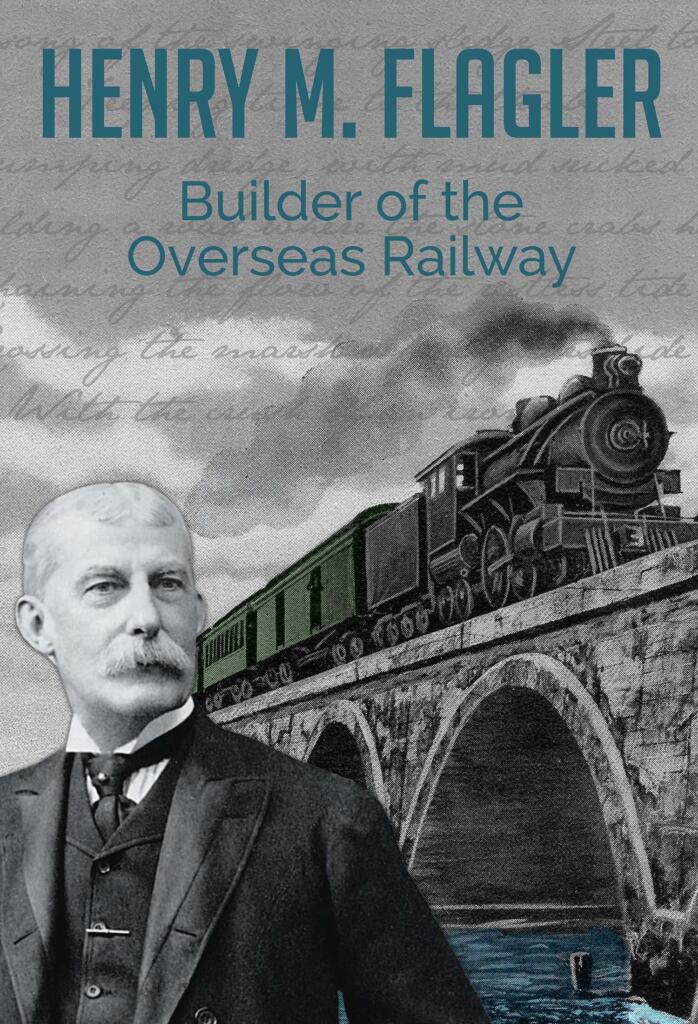
Henry Morrison Flagler, who is best known for his role as a founding partner of The Standard Oil Company, is credited with developing Florida’s East Coast during the late 1890s through the early 1900s. Establishing resort hotels dotted along the Atlantic seaboard, Flagler created a playground for wealthy Americans who journeyed to the Sunshine State from New York City, Chicago and other northern cities.
Flagler tried his hand at various businesses; some proved successful, others did not. Eventually, he partnered with John D. Rockefeller, making a fortune in refining oil. Their firm, The Standard Oil Company, became the world’s largest oil monopoly, allowing Flagler and Rockefeller to become millionaires.
Despite Flagler’s good fortune, the family experienced several setbacks. When Mary fell ill in 1878, her doctors recommended that she spend the winter in a warmer climate. The Flaglers went to Florida, a largely unpopulated state. Mary was able to rest, but few activities existed for the family to participate in. There were no resorts and no suitable roads for traveling.
Following Mary’s death in 1881, Flagler reduced his role at Standard Oil, instead focusing his attention on developing Florida. He returned to the state in 1884 with his second wife, Ida Alice Shourds. It was during that visit that he vowed to construct the Ponce de Leon hotel in St. Augustine, a grand Spanish- style building that opened in January 1888. The hotel cost Flagler $2,500,000, and was the first piece in the developer’s Florida empire.
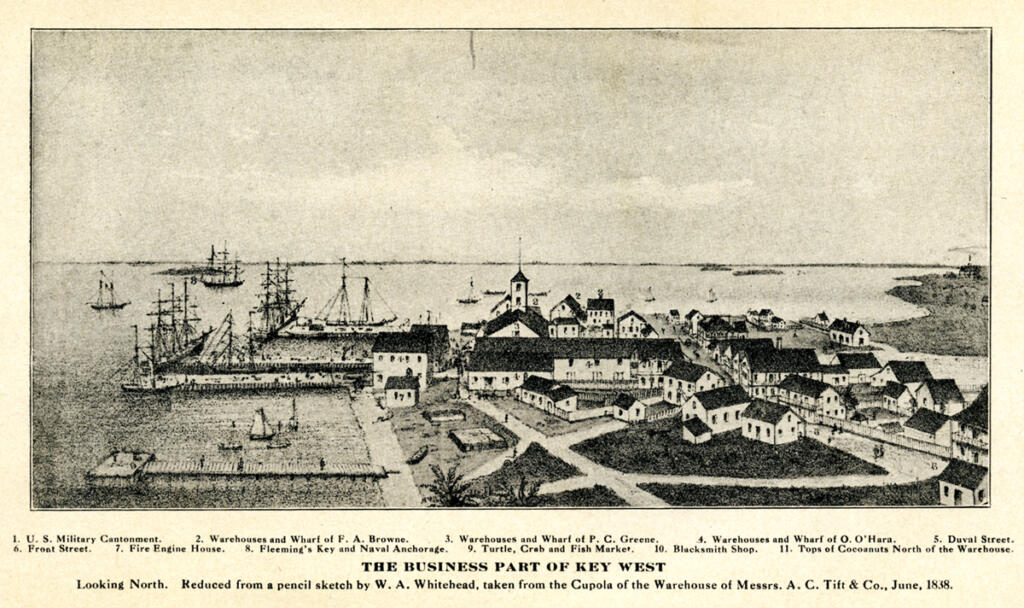
The 1820s
January 19, 1822: In Havana, John W. Simonton purchases the island of Key West for $200 from Juan Pablo Salas, who had acquired it for services rendered from the governor of Florida in 1815. Simonton sold three sections of the island to John Whitehead, John Fleeming and Pardon Greene.
December 29, 1829: Former commander of the anti-pirate squadron based in Key West, Commodore David Porter, writes to the Secretary of the Navy noting Key West “is to the Gulf of Mexico, etc., what Gibraltar is to the Mediterranean.”
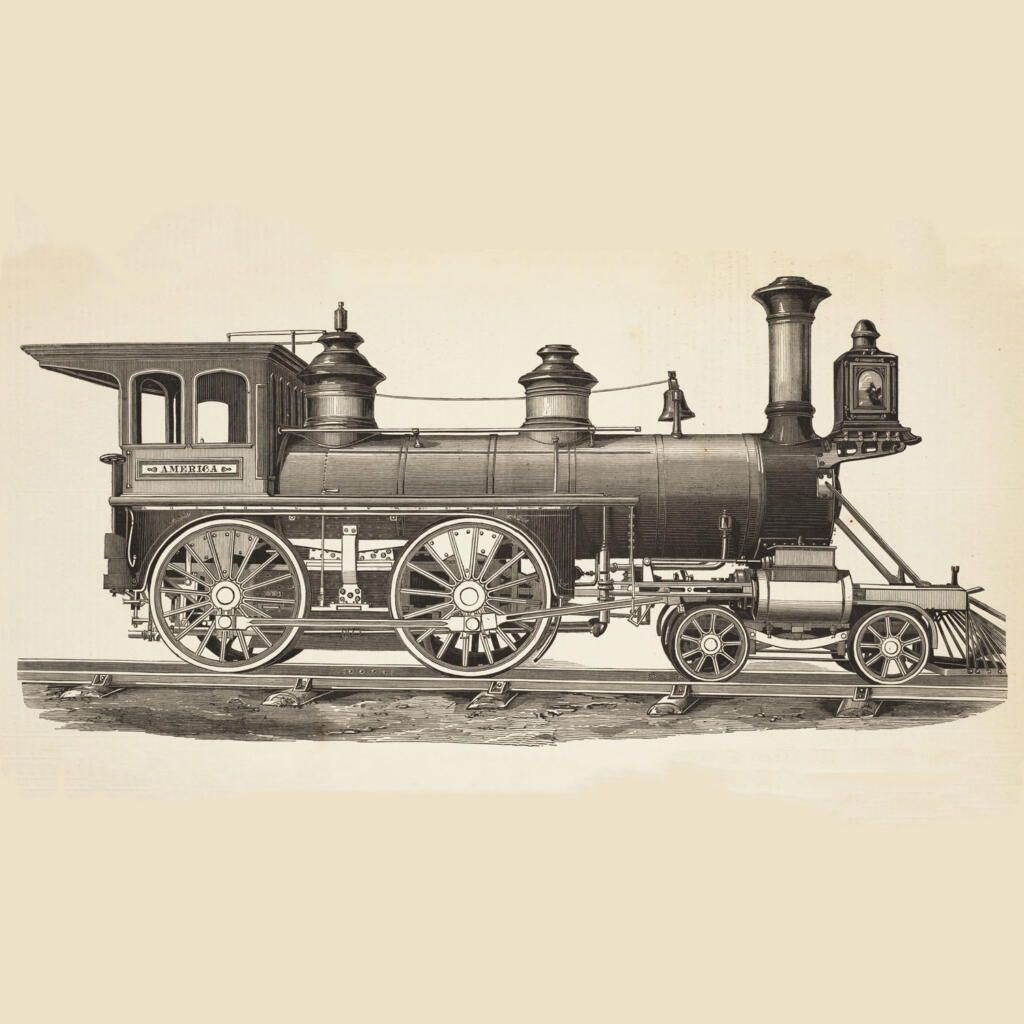
The 1830s
January 2, 1830: Henry Morrison Flagler, the future builder of the Overseas Extension, is born in Hopewell, New York.
1831: The ‘Key West Gazette’ refers to a potential railroad linking the Florida Keys with the mainland.
1835: The ‘Key West Enquirer,’ the newspaper which began publication in 1834, advocates the construction of a railroad linking the Keys and the mainland and further north to Washington D.C. and New York City.
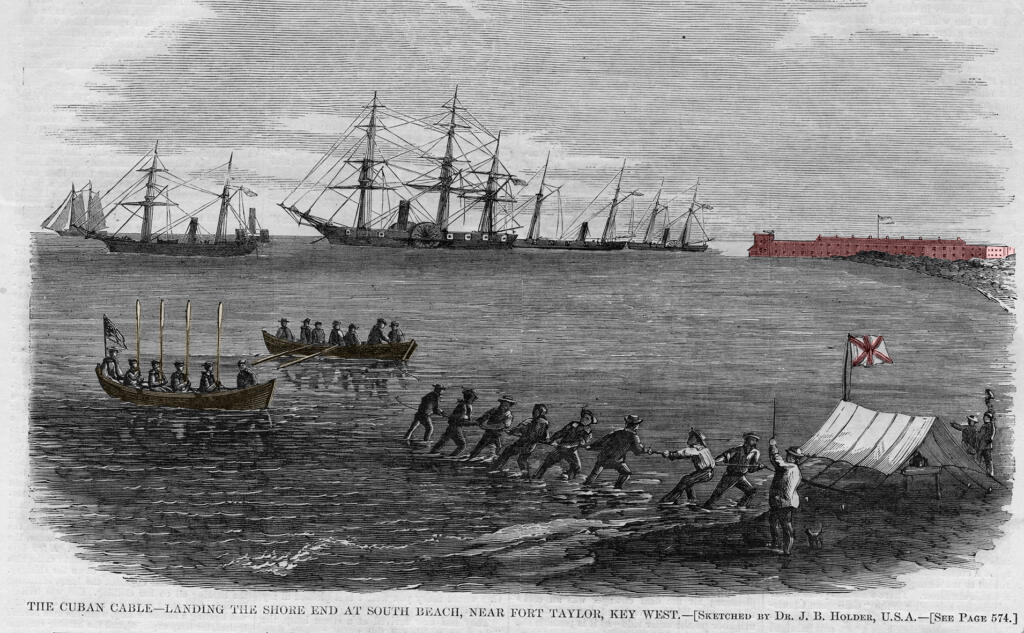
The 1860s
January 2, 1866: The state of Florida grants the International Ocean Telegraph Company an exclusive right to establish a commercial link between Key West and Cuba.
1867: Initially known as Rockefeller, Andrews & Flagler, the company’s principals form the Standard Oil Company in Cleveland, Ohio.
June 14, 1867: Mary Lily Kenan, Flagler’s third wife, is born in North Carolina.
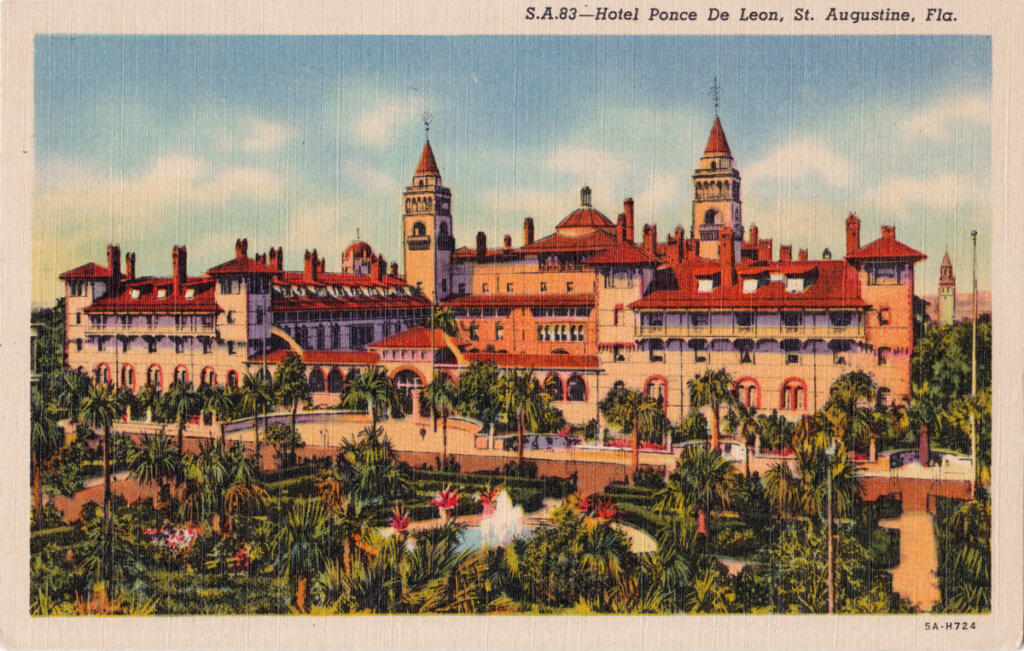
The 1870s
October 17, 1870: The Great Southern Railroad, intended to run from Millen, Georgia, to Key West, is incorporated.
1877: Standard Oil moves its headquarters to New York City and Flagler relocates his family from Cleveland, Ohio.
1878: Physicians advise Flagler to take his first wife Mary, suffering from a lung ailment, to Jacksonville, Florida for the winter.
1878: During this visit, Flagler focuses his attention on developing Florida as a resort destination, a vision he calls ‘a new American Riviera’, for which he later builds luxurious hotels along the state’s east coast.

The 1880s
1883: General John B. Gordon secures a franchise to build a railroad from Georgia to Key West, but he abandons work before ever reaching the Florida coast.
1885: An article in Railway World states that Flagler has purchased the lower half of Key Largo and parts of other islands.
1885: Flagler purchases the Jacksonville, St. Augustine and Halifax River Railway
1889: The Florida legislature sets aside 10 million acres of land across the state to be sold to entrepreneurs willing to build new railroad lines.
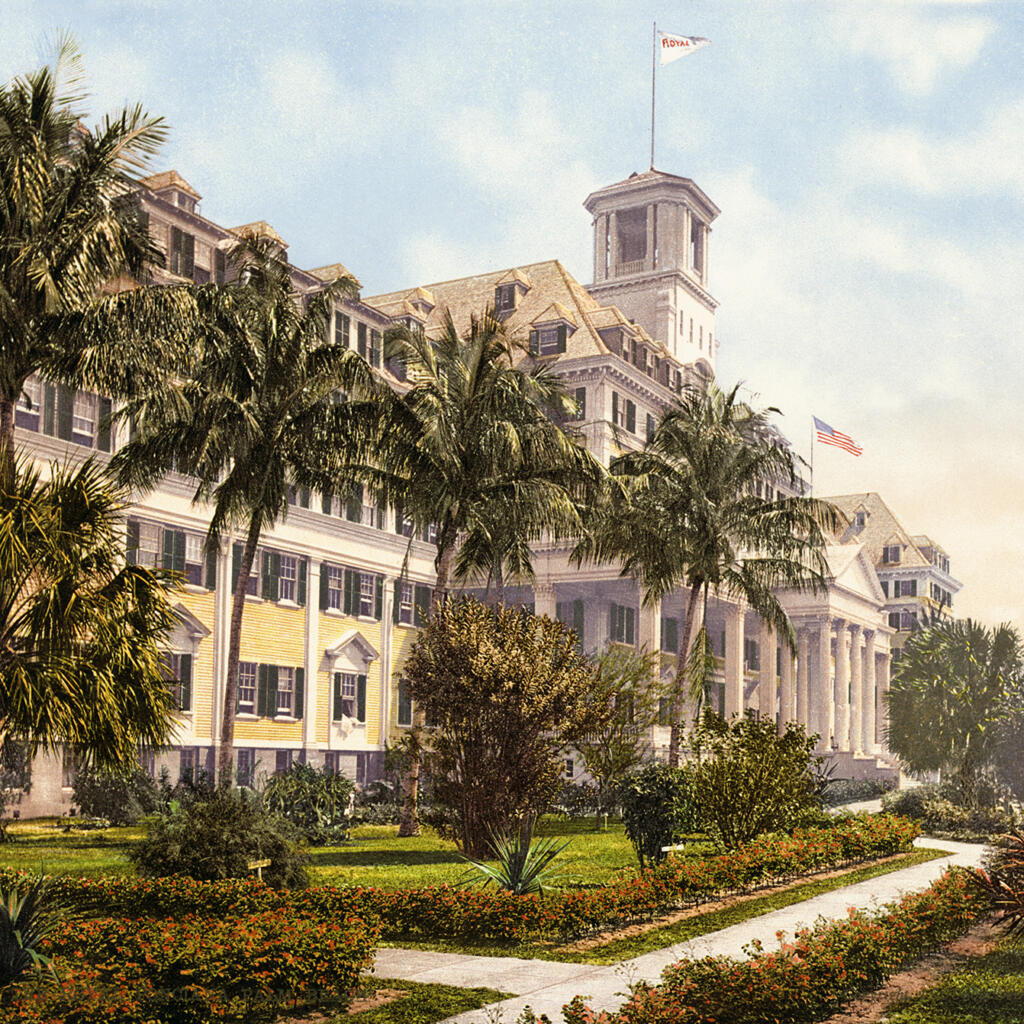
1890 – 1894
1891: Flagler talks with Jefferson B. Browne, then president of the Florida state senate, of the merits of building a rail line to Key West. Later that year, Flagler is introduced to Mary Lily Kenan, who later becomes his third wife.
April 29, 1893: The Florida state legislature grants a charter to Flagler’s Jacksonville, St. Augustine and Indian River Railway Company to extend its lines “on and across the Florida Keys to Key West,”
April 2, 1894: Flagler extends his railroad from St. Augustine to West Palm Beach to bring guests to his Hotel Royal Poinciana which opened in February.
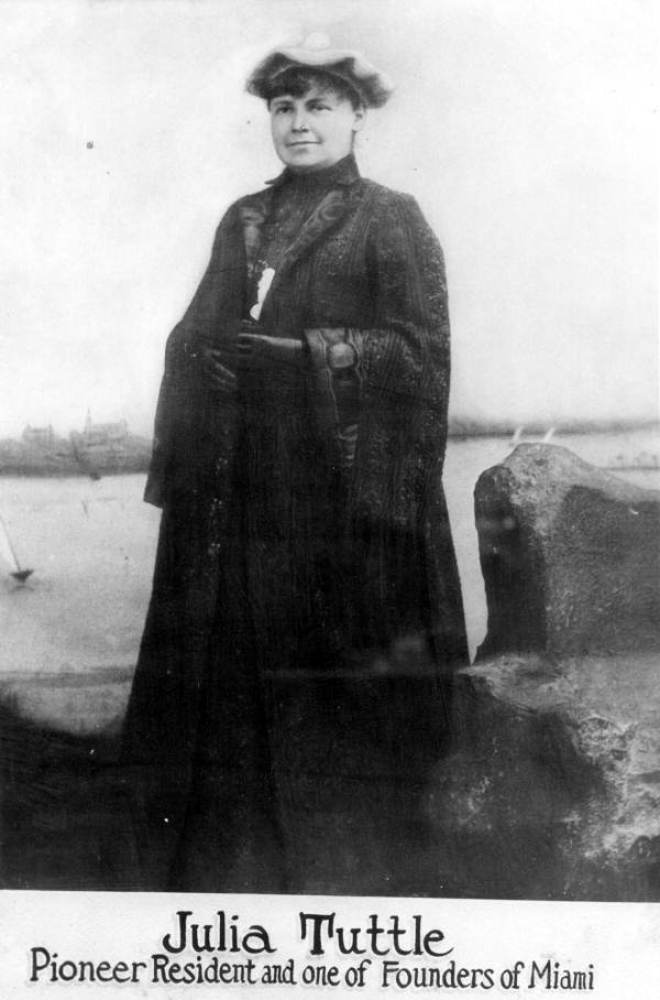
1895
February 6: Miami landowner Mrs. Julia Tuttle convinces Flagler about the potential development of the area and she offers Flagler 100 acres of her land for a railroad terminal, railroad yards, and a hotel site.
April 3: The ‘Bartow Courier-Informant’ reports that engineers say that a railroad through the Keys is possible and notes Flagler is working out the details.
September: Flagler changes the name of the Jacksonville, St. Augustine, and Indian River Railway to the Florida East Coast Railway (F.E.C.).
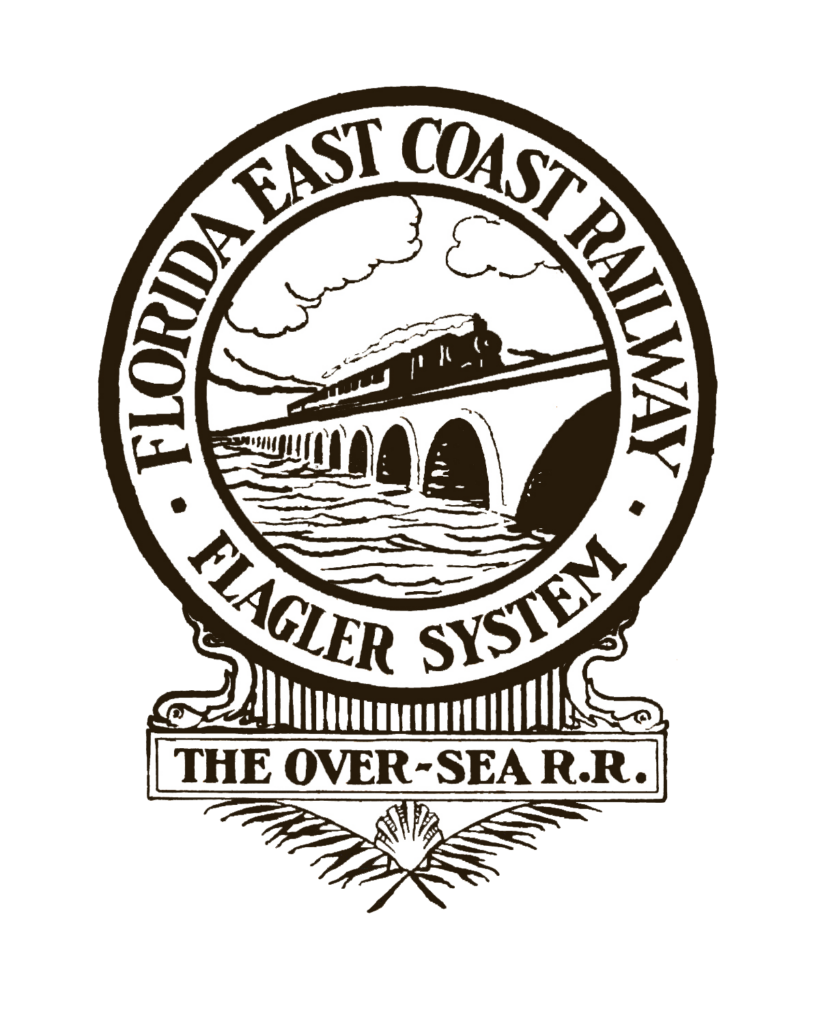
1896 – 1899
April 1896: The F.E.C. Railway reaches Miami, and the first passenger train arrives at the new end station at Biscayne Bay. At this point, Miami is a small community of approximately 300 people.
June 1896: Jefferson B. Browne publishes an essay, “Across the Gulf by Rail to Key West,” in National Geographic extolling the geographic and economic advantages of linking Key West to the mainland.
Summer 1898: The Spanish-American War causes the increased importance of Key West as a strategic military and economic location.
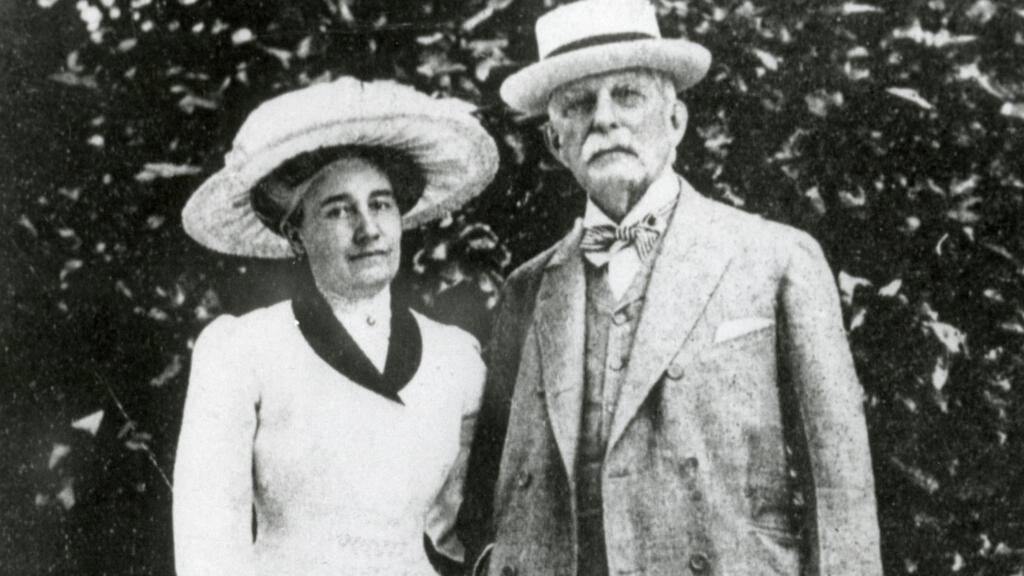
1900 – 1904
February 6: Miami landowner Mrs. Julia Tuttle convinces Flagler about the potential development of the area and she offers Flagler 100 acres of her land for a railroad terminal, railroad yards, and a hotel site.
April 3: The ‘Bartow Courier-Informant’ reports that engineers say that a railroad through the Keys is possible and notes Flagler is working out the details.
September: Flagler changes the name of the Jacksonville, St. Augustine, and Indian River Railway to the Florida East Coast Railway (F.E.C.).
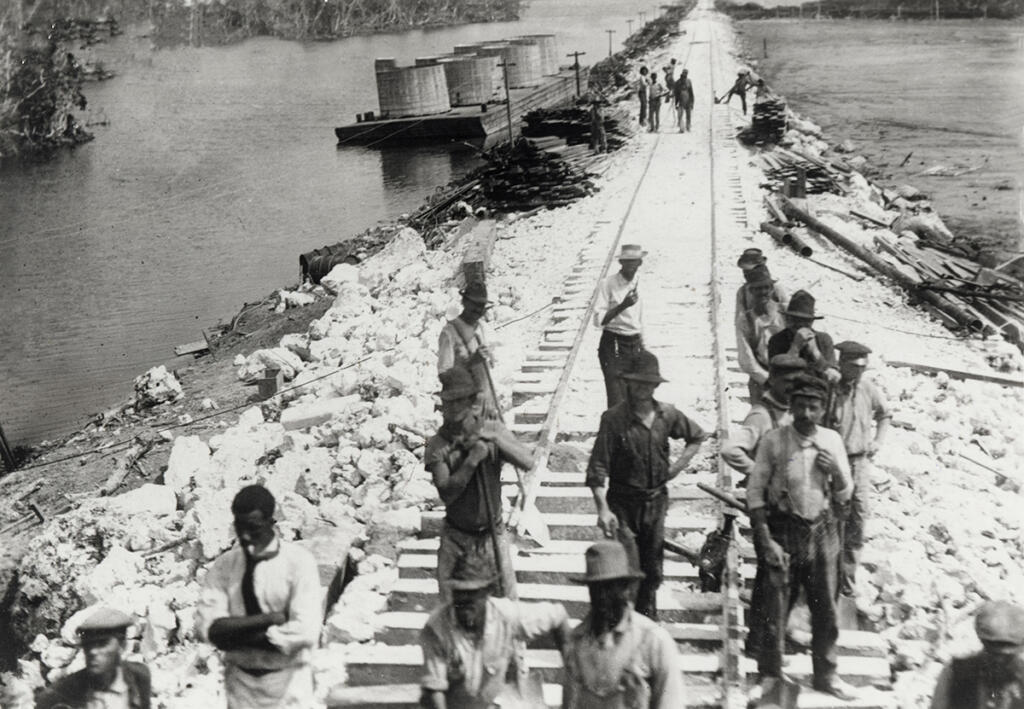
1905
January: Flagler and his associates leave Miami by steamer for a tour of the proposed route of the F.E.C. Railway Overseas Extension.
April: The F.E.C. Railway begins construction of the Extension from the mainland to Key West and completes the first rail section connecting Homestead to Jewfish Creek. Flagler says he expects the entire Extension to be in operation on January 1, 1908. The F.E.C. Railway appoints Clarence S. Coe as the Resident Engineer.
Summer: Workers begin construction of Camp No.10 two miles from the western end of Vaca Key, which later becomes a large-scale terminal, and eventually the city of Marathon.
November 2: The Overseas Extension breaks ground in Key West.
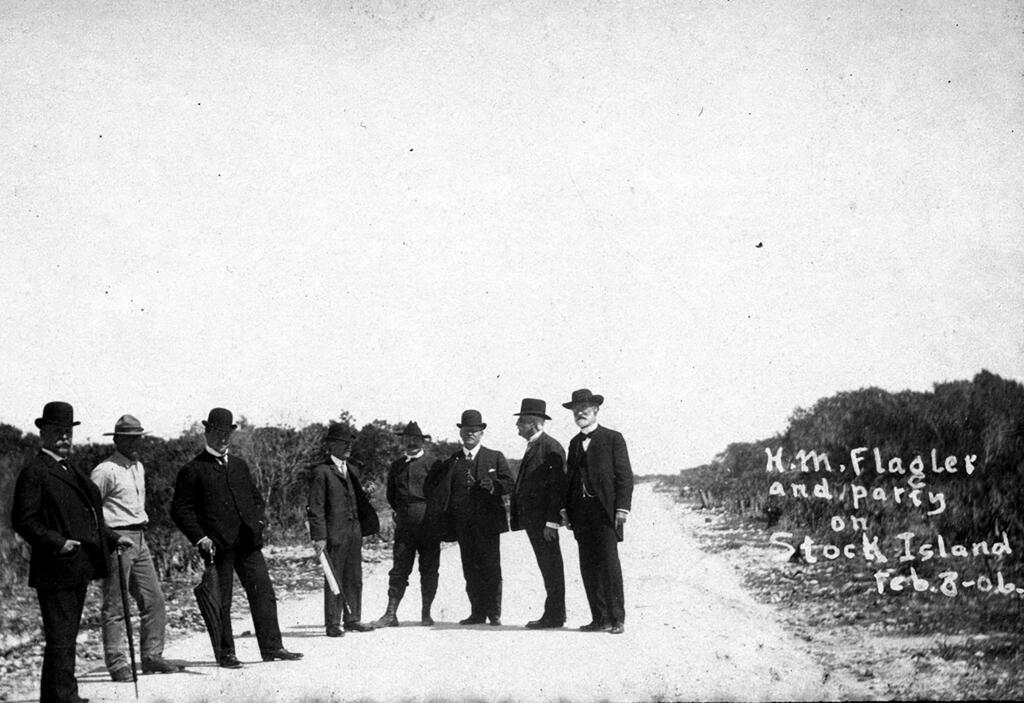
1906
The F.E.C. Railway builds the first of ten cement mixers, its most intricate machinery.
February 22: The F.E.C. Railway opens a new twelve-foot wide bridge connecting Stock Island with Key West for the first time, now called Cow Key Bridge.
October 17: A hurricane destroys much of the F.E.C. Railway’s work south of Miami, specifically the construction site at Long Key, leading to the opinion of many that this project is “Flagler’s Folly.” Many workers die when their houseboat is washed out to sea; the unofficial death toll of the storm is 164 men killed and 81 injured.
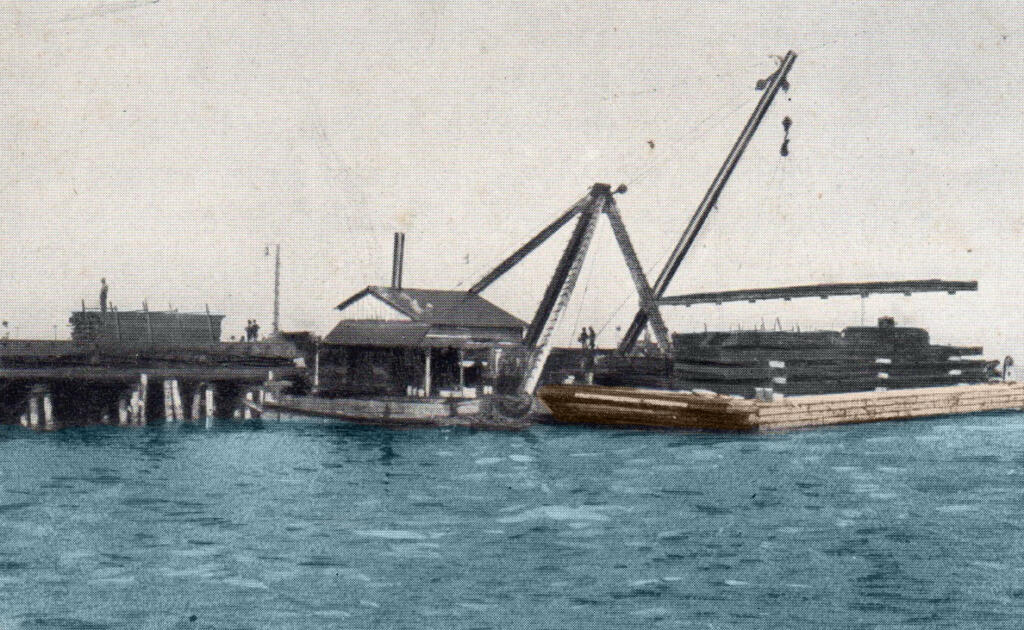
1907
February 5: The Overseas Extension’s Jewfish Creek drawbridge begins to work after a difficult installation.
April 15: At 4:00a.m., the boiler of the George W. Allen dredger explodes killing two F.E.C. Railway firemen and injuring seven others.
May: The Central Supply Depot in Islamorada is fully operational.
July: Two F.E.C. Railway workers die from drinking too much “Tiger Booze” supplied by Key West bootleggers who the sheriff’s deputies arrest and charge with murder.
Fall: F.E.C. Railway workers finish the railbed on Stock Island.
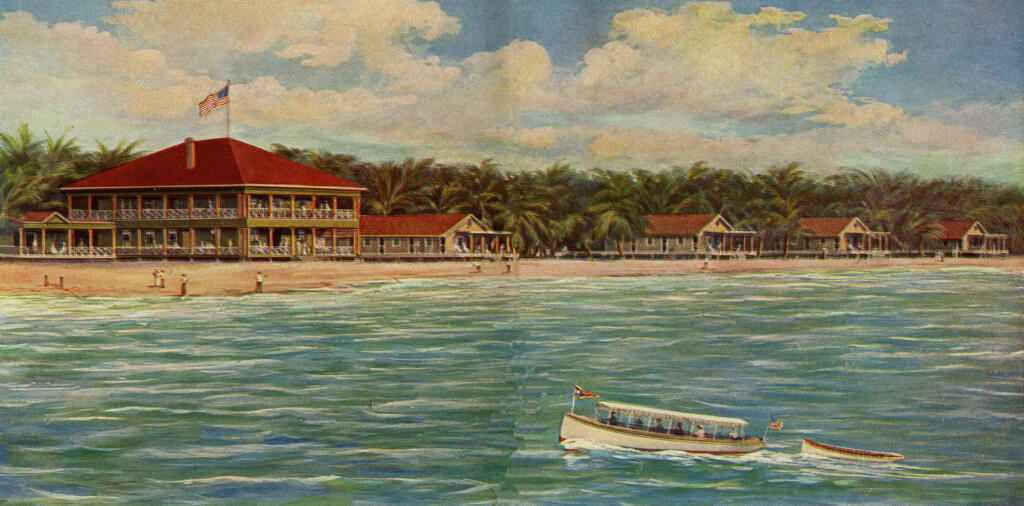
1908
January 22: Flagler rides the first train from Miami, crossing the Long Key viaduct, to the Knight’s Key dock, his railroad’s furthest point south.
February: The F.E.C. Railway inaugurates passenger service from Miami to Knights Key and the P&O steamer, Montauk, begins daily trips from Knight’s Key to Key West and on to Havana.
April: Workers complete the F.E.C. Railway’s machine shops and repair facilities on Boot Key, near present-day Marathon.
Fall: Flagler opens the former workers’ camp on Long Key as Long Key Fishing Camp. It serves wealthy winter visitors who wanted to feel they are “camping”, including the novelist Zane Grey.
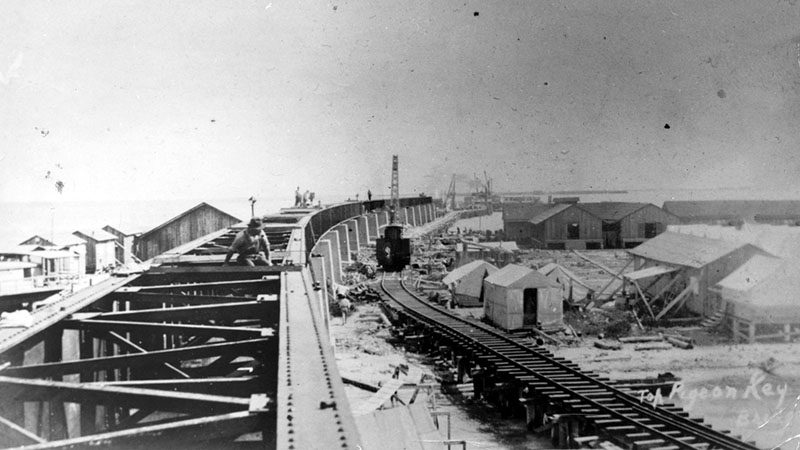
1909
January: The first luxury passenger train travels from New York City leaving at 2:10p.m. to Knight’s Key arriving at 7:30a.m. two days later.
February 7: After inspecting all the work stations between Knights Key and Key West, Flagler arrives by boat on the island.
March: The F.E.C. Railway moves its construction headquarters from Miami to Pigeon Key anticipating the construction of the Seven Mile Bridge.
April 20: Workers install the first steel span of the Seven Mile Bridge at approximately the same time Joseph C. Meredith, Chief Engineer, dies in a Miami hospital. Following Meredith’s death, William Krome takes over as Chief Construction Engineer.
May: A dynamite explosion kills seven workers and seriously injures seven others at the west end of Cudjoe Key.
June 30: F.E.C. Railway workers begin laying track on Big Pine Key.
October 10-11: A hurricane passes over the Florida Keys causing millions of dollars’ worth of damage, setting the completion date of the Overseas Extension back by two years. The F.E.C. Railway’s tugboat Sybill capsizes and thirteen of her crew drown.
October 14: The F.E.C. Railway announces that road beds on Stock Island, Boca Chica and Sugarloaf Keys have been washed out.
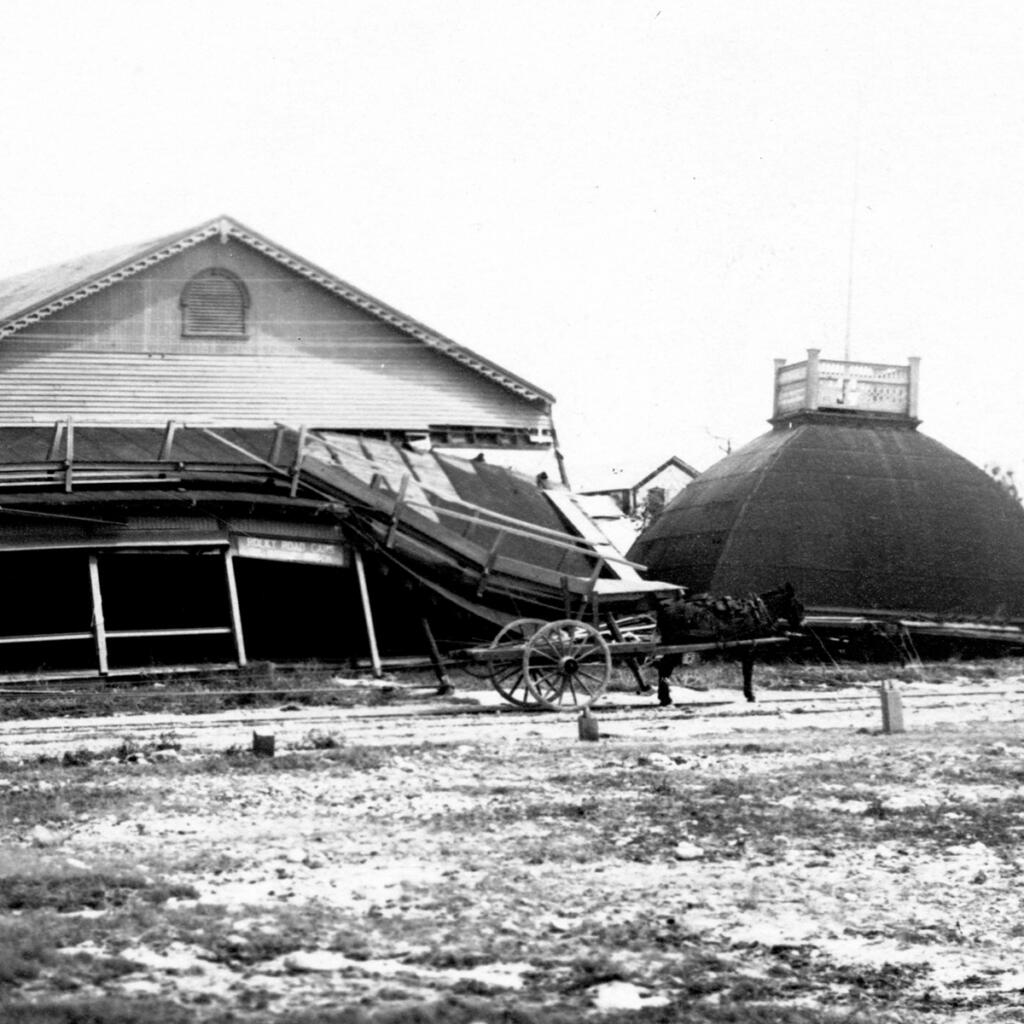
1910
May 12: F.E.C. Railway workers drive the first spike at the Trumbo Island railhead in Key West.
October 17-18: A hurricane with gusts up to 110 miles per hour, inflicts major structural damage to the Seven Mile Bridge and the tracks from the mainland to Knights Key Station, causing a further delay in completing the Overseas Extension.
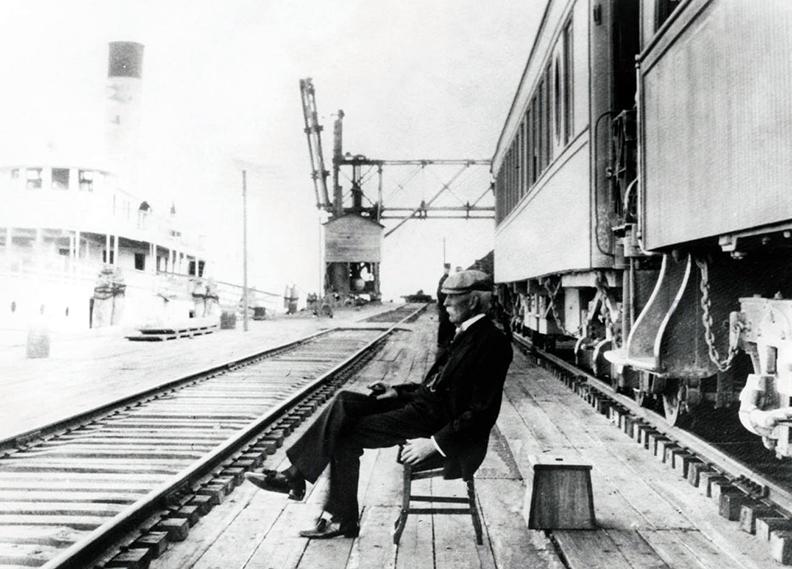
1911
April 23: Flagler arrives in Key West to survey the 134-acre landfill, now Trumbo Point, created to accommodate the trains scheduled to reach there the following year.
August 6: The F.E.C. Railway announces that the Bahia Honda Bridge will be completed by January 1, 1912.
November 11: The F.E.C. Railway’s stern-wheel steamer Kennedy backs into the launch Ida Belle Lounds causing damage to both vessels and one death.
December: F.E.C. Railway workers moving east from Key West and west from Big Pine Key meet on Sugarloaf Key, thus opening the last twenty-seven miles of track.
December 16: Flagler and F.E.C. Railway President, Joseph. R. Parrott, arrive in Key West on an inspection tour.
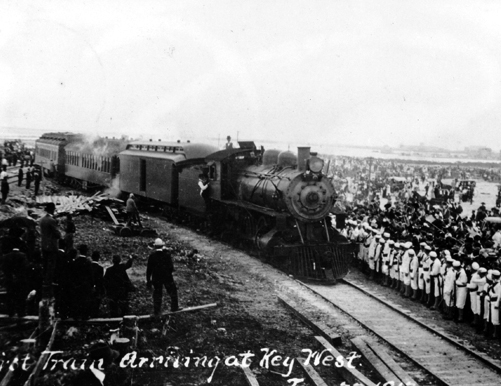
1912
January 21: Engineers place the final steel plate girder on the Seven Mile Bridge. Before Flagler arrives from Miami the following day, Engine 201 tests the tracks between Marathon and Key West.
January 22: The first F.E.C. Railway train, pulling cars 90 and 91 (“The Rambler”), arrives in Key West with the 82-year-old Flagler and his wife Mary Lily Kenan on board.
January 24: At 6:22a.m., The Rambler carries Flagler north to his home at Whitehall ending his final visit to Key West.
January 26: The first excursion train leaves Key West for Long Key carrying 123 passengers who, after a short stay there, return to Key West. The round-trip fare is $2.60.
February 8: The Key West Fish Company transports its first shipment of iced fish by rail to New York City.
May 13: The P&O Steamship Line announces a roundtrip excursion rate of $5.00 from Key West to Havana on the Olivette and Mascotte.
August: A Havana newspaper reports service between Havana and New York City: “Leave Havana, 10:30 A.M. Arrive Key West 6:30 P.M. Leave Key West, 7:30 P.M. Arrive Jacksonville 1:55 P.M. Arrive New York, 7:55 P.M. …Only two nights en route between Havana and New York!”
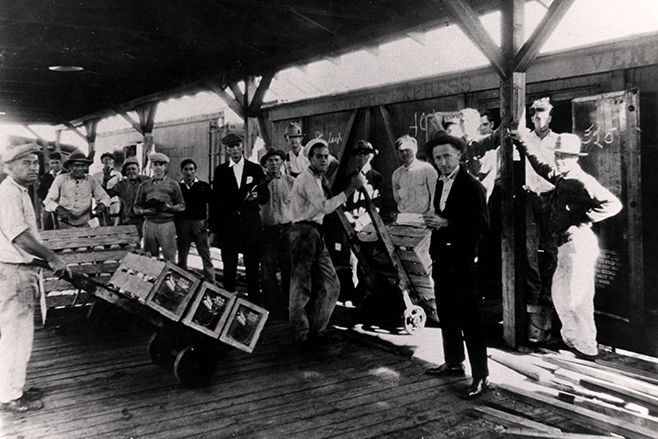
1913 – 1919
May 20, 1913: Henry Flagler dies at his home Whitehall in Palm Beach at the age of 83 and is buried in St. Augustine at Memorial Presbyterian Church and Columbarium.
January 8, 1915: The P&O freight car ferries, Henry M. Flagler, Estrada Palma, and Joseph R. Parrott inaugurate service between Key West and Havana. Each ferry holds twenty-six large railroad freight cars.
1916: The F.E.C. Railway’s complex at Trumbo Point includes amenities for the workers, a large office building an even larger warehouse. Scattered among the spur tracks were shops for machines, carpenters, blacksmiths, a “drive-through” engine shed and two huge molasses tanks.
July 27, 1917: Mary Lily Kenan, Flagler’s third wife, dies at the age of 50.
February 1918: The F.E.C. Hotel Company (a subsidiary of the Railway) purchases 6.5 acres of land and 1,200 feet of shoreline. Construction begins on the Casa Marina Resort shortly thereafter.
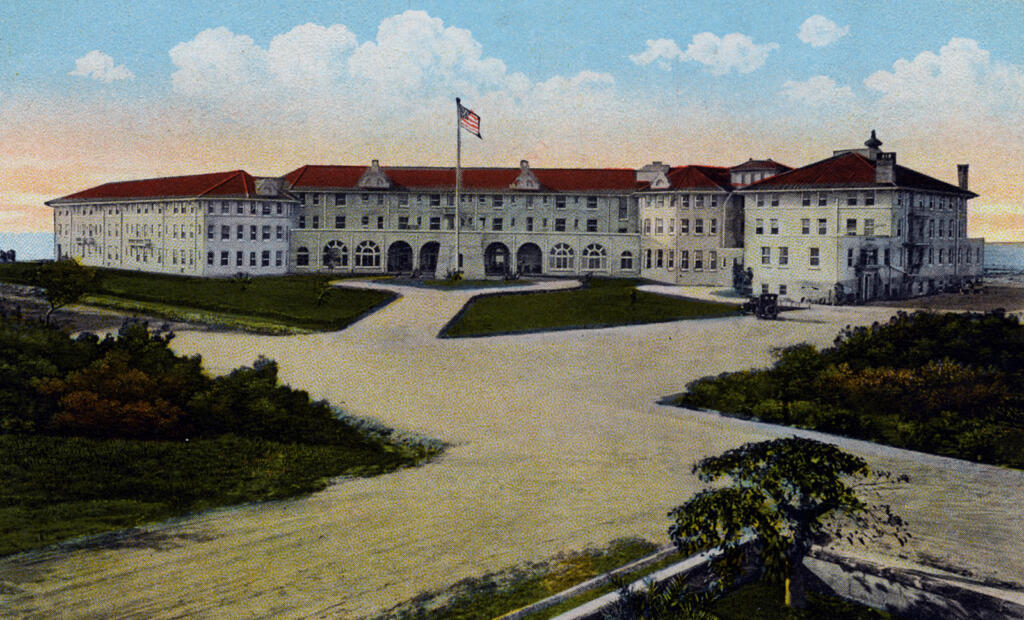
The 1920s
1920: The population of Key West is 18,749, not quite the 50,000 Flagler predicted on January 22, 1912, the day after the first train arrived from the mainland.
December 31, 1920: After years of work at a cost of almost $2 million, the Casa Marina Resort holds its grand opening with a New Year’s Eve ball.
1926: Monroe County citizens overwhelmingly approve a $2.5 million bond issue to launch construction of the “Overseas Highway.”
October 24, 1929: The Wall Street stock exchange crashes, beginning the Great Depression, adversely affecting the F.E.C.’s hotel and railroad empire.
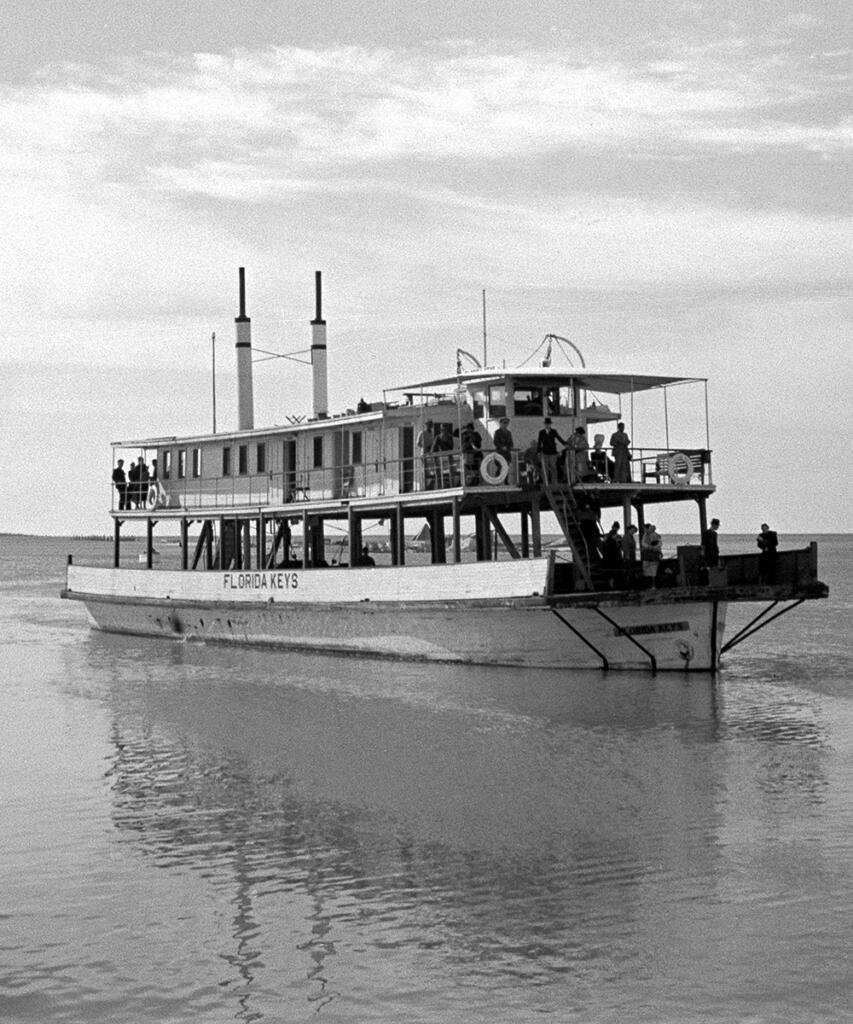
1930 – 1934
Financial hard times curb travel on the famous Havana Special route resulting in only one daily arrival in and departure from Key West.
The round trip fare for travel on the F.E.C. Railway from Miami to Havana is $24.00. A daily round-trip excursion rate from Key West to Miami costs $4.75 and only $2.50 on Sundays.
February 16, 1931: Officials open an additional section of the Overseas Highway allowing motor vehicles to drive from mainland Florida to Matecumbe Key, then by ferry to Grassy Key, by road to Key Vaca, by ferry to No Name Key, then by road to Key West.
September 1, 1931: The Great Depression forces the F.E.C. Railway to default on its mortgage bond interest payments, becoming a ward of the Federal Bankruptcy Court, but continues limited service.
1933: The Florida Legislature creates the Overseas Road and Toll Bridge District to complete a highway from Lower Matecumbe Key to Big Pine Key thus eliminating the necessity for ferries.
1934: The Federal Emergency Relief Administration (F.E.R.A.) opens labor camps for unemployed World War I veterans to repair railroad beds in the Upper Keys.
July 1, 1934: Most Key West businesses fold as a result of the Great Depression and half the citizens are on relief. The city declares bankruptcy and requests the state take over its responsibilities.
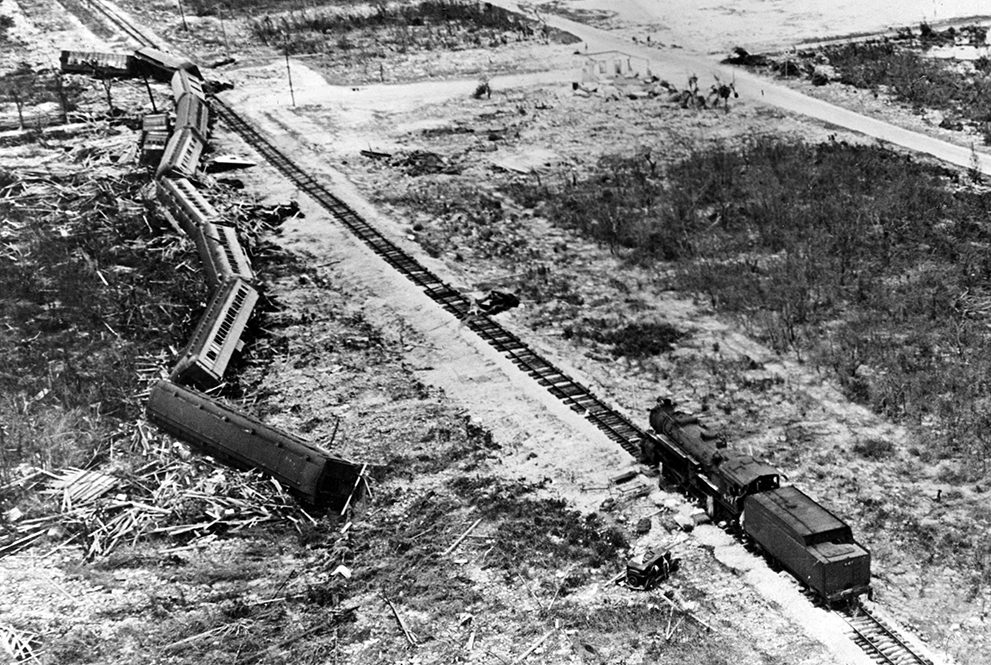
1935
September 2-3: A disastrous category 5 hurricane devastates the Middle Keys killing hundreds and washing away miles of embankment. The large bridges survive with minor damage. Among the dead are 400 World War I veterans working on the railroad. The storm left the already distressed F.E.C. Railway in ruins and Key West inaccessible by direct land route for the first time since 1912. The Railway is financially unable to reconstruct the rail line from Homestead to Key West.
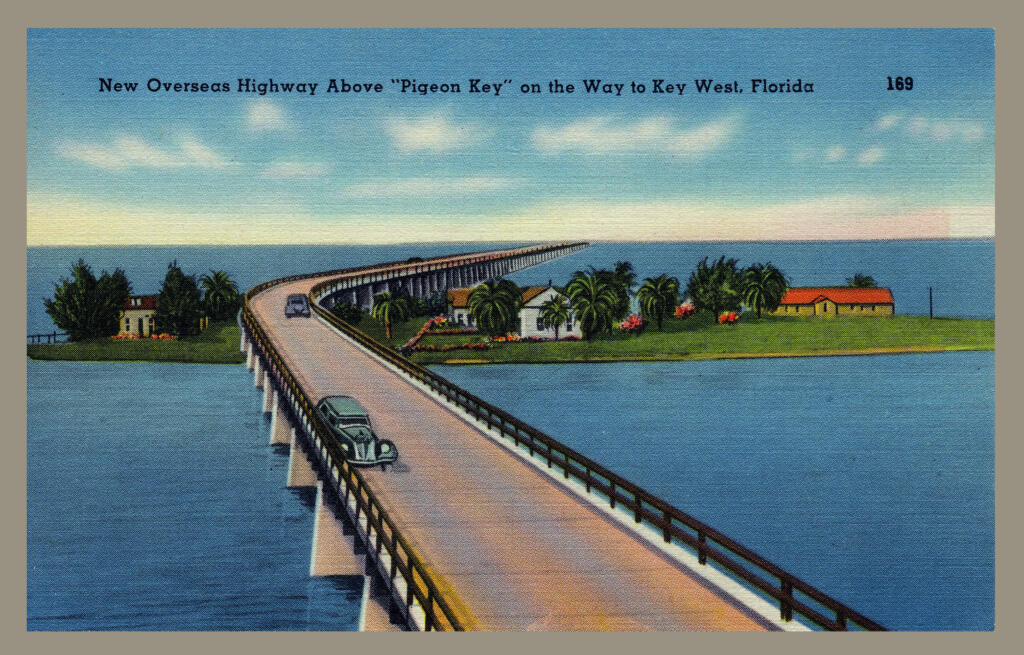
1936 – 1938
1936: The F.E.C. Railway successfully petitions to the Interstate Commerce Commission to abandon the remaining rails on the Overseas Extension to allow the construction of highway roads over the former railroad bridges.
May 30, 1936: In Washington D.C., The Public Works Administration approves a $3.6 million loan to the Overseas Road and Toll Bridge District to construct a highway using the former railroad bridges.
October 10, 1936: Bids for construction of several sections of the Overseas Highway open with high hopes for a completed highway before the close of the 1937-38 winter season.
May 21, 1937: A federal judge authorizes the Receivers of the F.E.C. Railway to sell the Trumbo Point terminal (except the Granday Turtle Canning Company) to the highest bidder, Mr. S.C. Anderson of Coral Gables for $146,000.
July 2, 1938: Officials open of the Overseas Highway from Card Sound to Key West, thus re-establishing a direct land route between the mainland and Key West.
